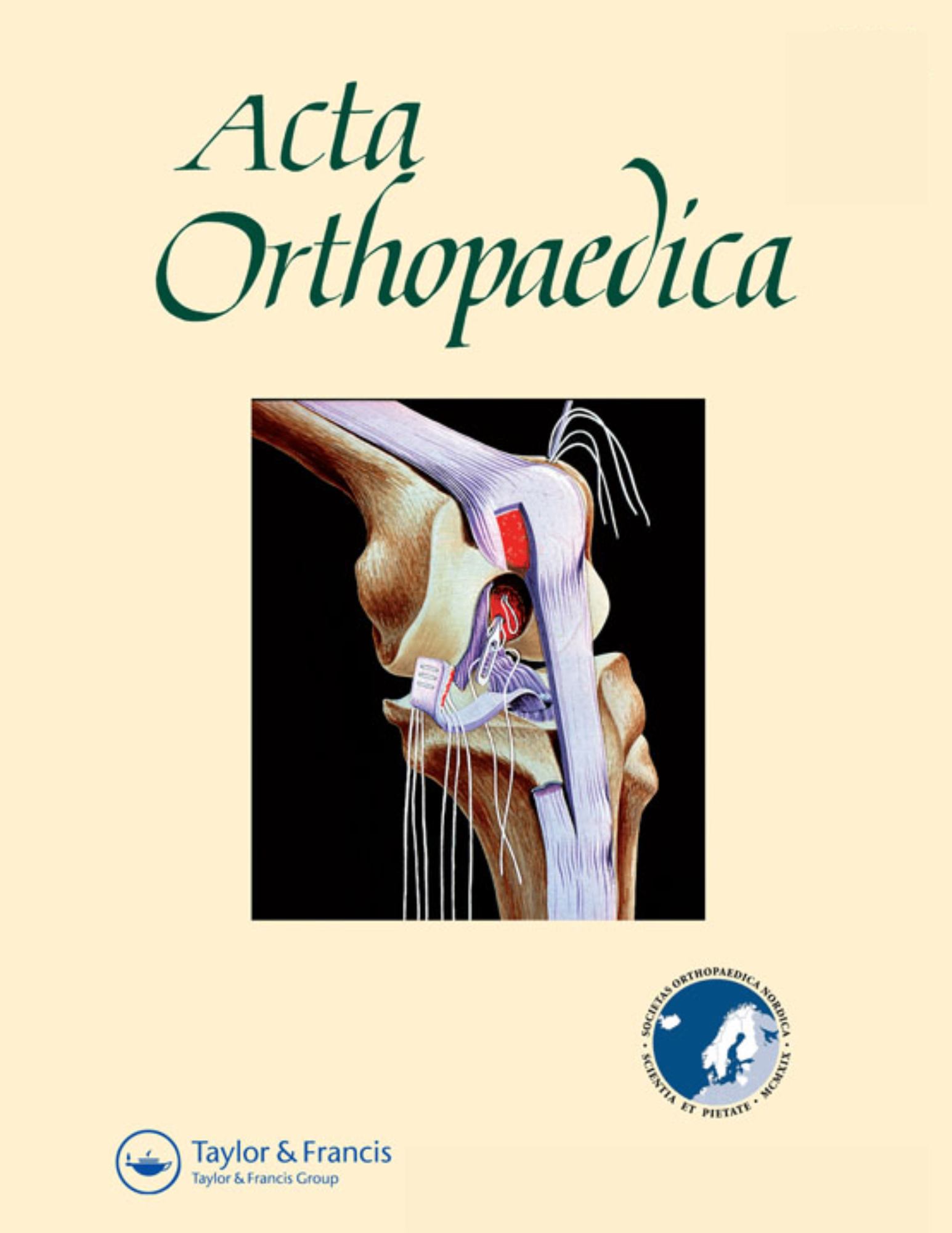
Operative treatment of clavicle fractures improves short-term functional outcomes

Operative treatment of clavicle fractures improves short-term functional outcomes
Operative and nonoperative treatment of clavicle fractures in adults
Acta Orthop. 2012 Feb;83(1):65-73. doi: 10.3109/17453674.2011.652884. Epub 2012 Jan 17Synopsis
This systematic review identified 14 trials (6 randomized controlled trials, 7 controlled clinical trials) that compared the clinical outcomes of operative and non-operative treatment of clavicle fractures in adults. The majority of identified trials focused on the treatment of middle-third clavicle fractures, with one controlled clinical trial assessing treatment outcomes in lateral clavicle fractures. The results from this systematic review indicated that there was moderate evidence (GRADE B) demonstrating operative treatment produced better functional outcomes and less disability at short-term follow-up, had a less common occurrence of delayed union and non-union, and had a similar risk of mild complication as non-operative treatment.
Were the search methods used to find evidence (original research) on the primary question or questions stated?
Was the search for evidence reasonably comprehensive?
Were the criteria used for deciding which studies to include in the overview reported?
Was the bias in the selection of studies avoided?
Were the criteria used for assessing the validity of the included studies reported?
Was the validity of all of the studies referred to in the text assessed with use of appropriate criteria (either in selecting the studies for inclusion or in analyzing the studies that were cited)?
Were the methods used to combine the findings of the relevant studies (to reach a conclusion) reported?
Were the findings of the relevant studies combined appropriately relative to the primary question that the overview addresses?
Were the conclusions made by the author or authors supported by the data and or analysis reported in the overview?
How would you rate the scientific quality of this evidence?
Yes = 1
Uncertain = 0.5
Not Relevant = 0
No = 0
The Reporting Criteria Assessment evaluates the transparency with which authors report the methodological and trial characteristics of the trial within the publication. The assessment is divided into five categories which are presented below.
4/4
Introduction
4/4
Accessing Data
2/4
Analysing Data
1/4
Results
2/4
Discussion
Detsky AS, Naylor CD, O'Rourke K, McGeer AJ, L'Abbé KA. J Clin Epidemiol. 1992;45:255-65
The Fragility Index is a tool that aids in the interpretation of significant findings, providing a measure of strength for a result. The Fragility Index represents the number of consecutive events that need to be added to a dichotomous outcome to make the finding no longer significant. A small number represents a weaker finding and a large number represents a stronger finding.
Why was this study needed now?
Middle-third clavicle fractures have been traditionally treated using non-operative methods; however, recent research has called this practice into question. A number of clinical trials comparing operative and non-operative treatments have presented results indicating that operative management of these injuries may provide superior short-term functional outcomes, reduce long-term disability, and reduce the risk of non-union or malunion. This systematic review compiled both randomized controlled trials and controlled clinical trials to assess the effectiveness of operative and non-operative treatment methods for acute clavicle fractures in adults.
What was the principal research question?
Does operative treatment of acute clavicle fractures provide superior clinical and functional outcomes compared to traditional non-operative treatments?
What were the important findings?
- A total of 14 trials were identified, 6 randomized controlled trials (631 patients) and 7 controlled clinical trials (559 patients).
- 6 trials comparing operative and non-operative treatment (3 RCT and 3 controlled clinical trials) indicated that there was moderate quality evidence (GRADE B) of considerable effectiveness at 6 weeks in favour of the operative treatment for function (Constant Score) and of low effectiveness at 6 months in favour of the operative treatment.
- 6 trials comparing operative and non-operative treatment (3 RCT and 3 controlled clinical trials) indicated a similar trend in the assessment of DASH outcomes with moderate quality evidence indicating considerable effectiveness at 6 weeks and low effectiveness at 6 months in favour of operative treatment.
- 6 trials comparing operative and non-operative treatment (3 RCT and 3 controlled clinical trials) found moderate quality evidence of similar risk of mild complications in patients treated operatively or non-operatively.
- 5 trials comparing operative treatment with operative treatments (2 RCT and 3 controlled clinical trials) found limited evidence of no difference in pain scores at 3 days between locking plate and non-locking plate, limited evidence of no difference in function (Constant Score) at one year between pin and plate or locking plate and nonlocking plate, and limited evidence of no difference in the complication rate between pin and plate osteosynthesis.
- 1 RCT comparing non-operative treatments found limited evidence of no difference in pain between rucksack bandage and mitella at 2 weeks and 6 months.
What should I remember most?
The results from this systematic review indicated that there was moderate evidence (GRADE B) demonstrating operative treatment produced better functional outcomes and less disability (Constant and DASH Scores) at short-term follow-up, had a less common occurrence of delayed union and non-union, and had a similar risk of mild complication as non-operative treatment. Additionally, there was limited evidence that there were no differences in functional outcomes, pain (at 3 days) and complication rate between operative techniques.
How will this affect the care of my patients?
This systematic review indicates moderate evidence that operative treatment of middle-third clavicle fractures may provide an improvement in short term functional outcomes and better fracture union rates, however, after 6 months the benefits of operative treatment were small. Additionally, the use of non-operative treatment appears to still provide adequate outcomes. There is still a need for high quality randomized controlled trials to compare operative and non-operative, operative and operative treatments and non-operative and non-operative treatments to strengthen the evidence base with which conclusion can be drawn about optimal treatment methods.
Learn about our AI Driven
High Impact Search Feature
Our AI driven High Impact metric calculates the impact an article will have by considering both the publishing journal and the content of the article itself. Built using the latest advances in natural language processing, OE High Impact predicts an article’s future number of citations better than impact factor alone.
Continue



 LOGIN
LOGIN

Join the Conversation
Please Login or Join to leave comments.